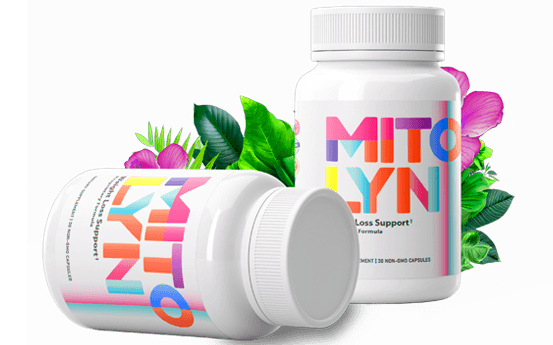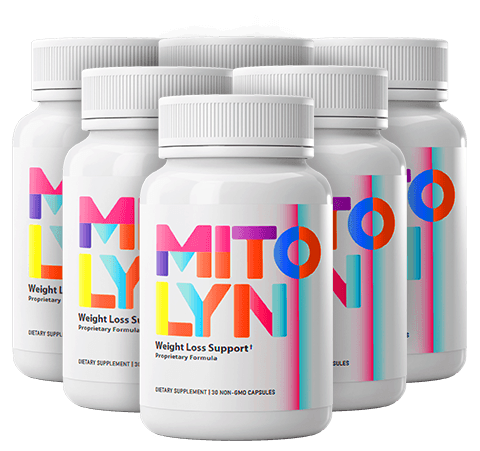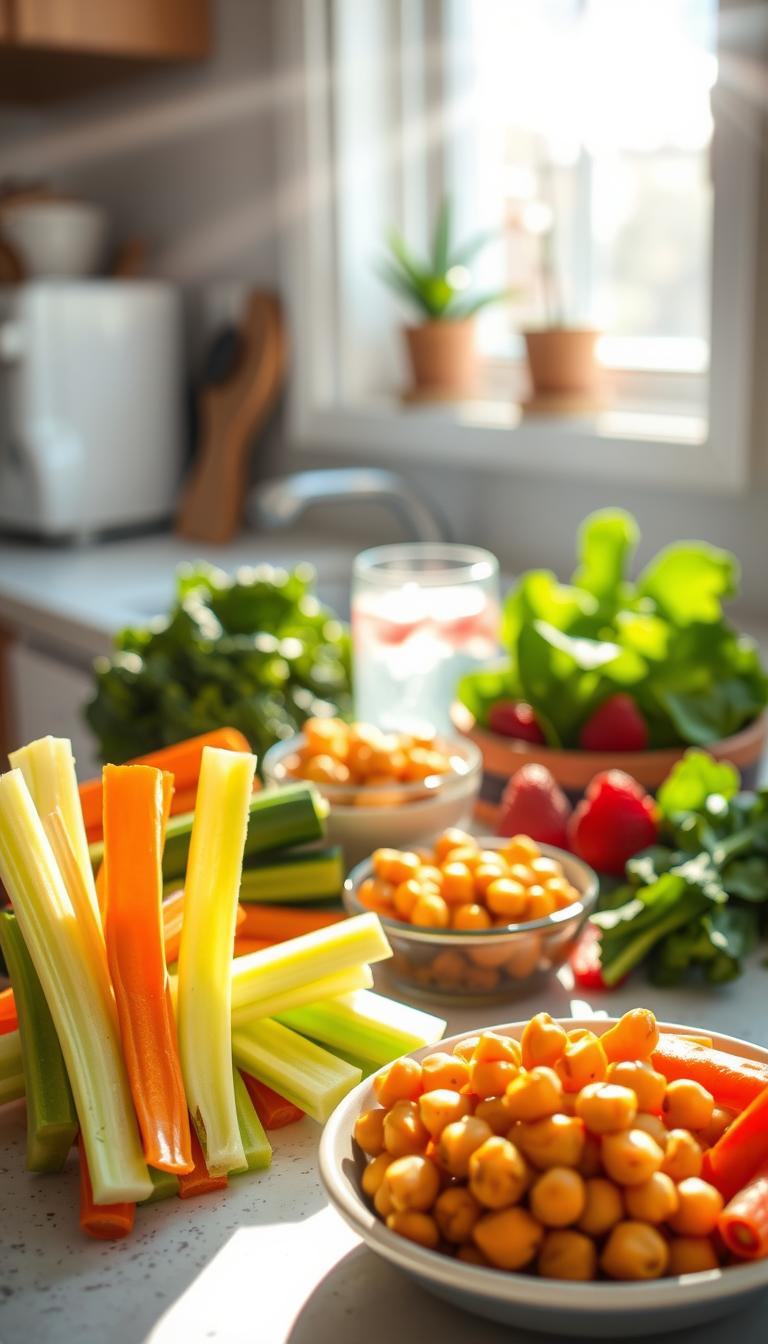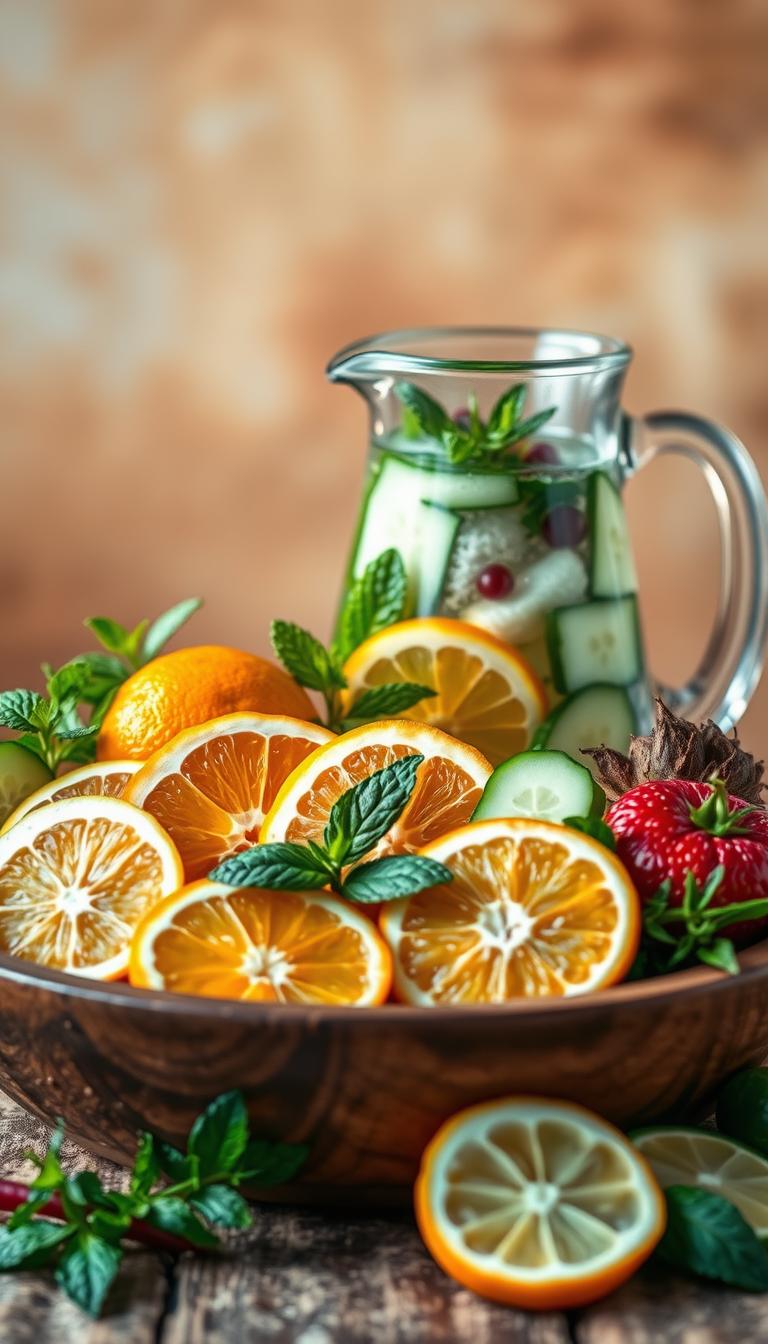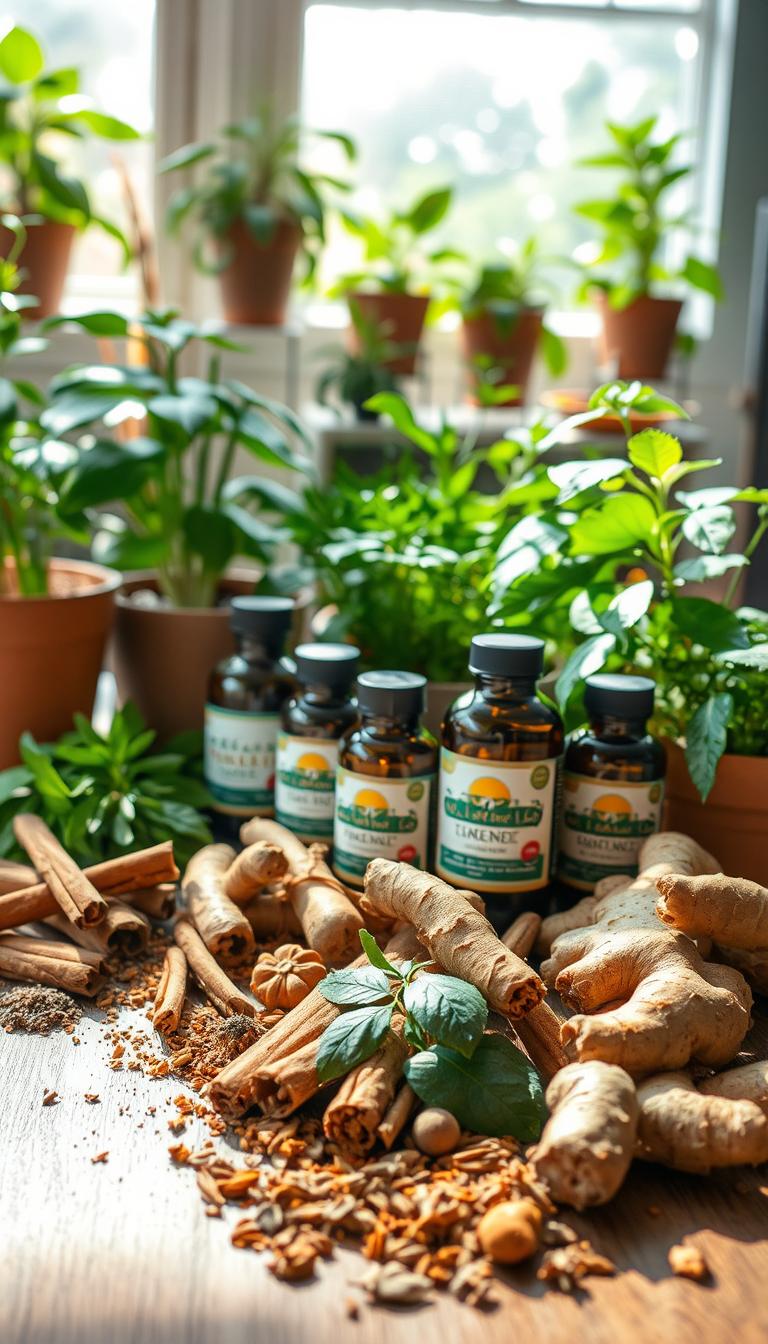
Three years ago, my doctor showed me a chart with my A1C going up. I felt stuck between pills and not knowing what to do. Then, I found small changes that made a big difference. Today, I want to share natural ways to keep blood sugar in check that science supports and people use every day.
Over 30 million Americans live with diabetes, and 84 million more have prediabetes. But what if simple actions like drinking water with meals or choosing almonds over chips could help? These steps aren’t magic, but they’re backed by science. Let’s explore how natural ways to stabilize blood sugar can give you more control without feeling like you’re missing out.
Imagine this: taking a walk after dinner, eating almonds instead of candy, or pausing before you eat. These choices aren’t random—they’re based on studies. Whether you’re managing prediabetes or just want to stay healthy, this guide shows how small changes can make a big difference. Are you ready to try something new?
Key Takeaways
- Walking 20 minutes after dinner lowers blood sugar (Medical Science Monitor, 2018).
- Barley’s 6g fiber per cup helps with gut health and blood sugar balance.
- Eating carbs with protein/fat slows digestion, as nutritionist Judith Wylie-Rosett advises.
- HIIT workouts improve glucose control in those with metabolic issues (2022 Diabetes Research review).
- Mindful eating stops overeating, which reduces blood sugar swings.
My Journey to Finding Natural Blood Sugar Solutions
My health journey started after years of just taking medicine. Learning that Type 2 diabetes costs the U.S. $237 billion a year made me look for other ways. I wanted to find alternative methods for managing blood sugar levels to tackle the problem’s roots, not just its symptoms.
Why I Started Looking Beyond Medication
Medicine kept my blood sugar in check but made me very tired. I also had stomach problems. I learned that 90% of diabetes cases could be prevented by changing our lifestyle. So, I started tracking what I ate, how much I exercised, and how well I slept.
Small changes, like eating more veggies and less refined carbs, helped a lot.
What My Doctor Said About Complementary Approaches
“Lifestyle changes can reduce your need for medication over time—but they’re not a quick fix,” my endocrinologist explained.
She said it was okay to mix holistic approaches to blood sugar control with my medicine. We agreed on small steps: walking for 15 minutes after meals, drinking herbal tea instead of sugary drinks, and eating more fiber. She reminded me to focus on being consistent, not perfect.
Setting Realistic Expectations for Natural Remedies
I learned to be patient. After three months, my fasting glucose went down by 15 points. This was thanks to cutting down on refined carbs and doing 15 minutes of yoga every day. Remember, progress is slow, and we all have setbacks.
My doctor said that alternative methods work best when we also see doctors regularly and set achievable goals. It’s a long-term effort, not a fast fix.
Understanding Blood Sugar: The Basics You Need to Know
Glucose and insulin are key to blood sugar. Glucose is the body’s main fuel. It goes into the blood after we eat. Insulin helps cells take in glucose.
When this balance is off, energy issues start. High blood sugar can make you thirsty and tired. Low blood sugar might make you shaky or dizzy.
The American Diabetes Association has guidelines. They say pre-meal blood sugar should be 80-130 mg/dL. It should be under 180 mg/dL two hours after eating. Using blood glucose meters or CGMs helps track these levels.
- Choose low-glycemic foods to avoid spikes.
- Stay hydrated to support natural sugar balance.
- Incorporate fiber-rich foods to slow digestion.
- Exercise regularly to boost insulin sensitivity.
- Track meals and activity to spot trends.
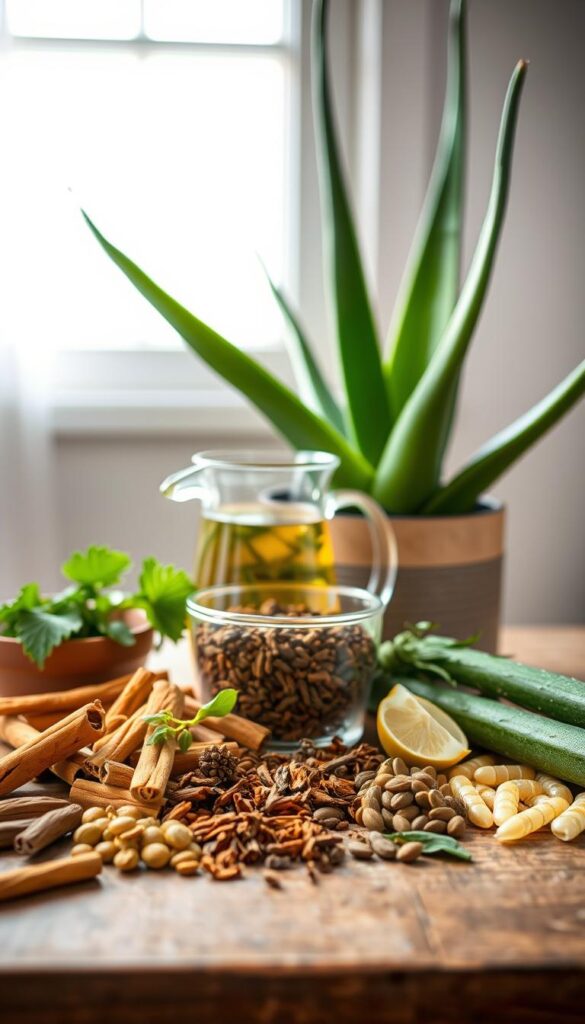
These tips are part of daily life. Probiotics and healthy snacks help keep energy steady. Stress can raise sugar levels, but yoga or meditation can help.
Combining these tips with doctor advice is key. Small changes can lead to big improvements. This guide will explore more natural ways to control blood sugar.
Natural Remedies to Keep Blood Sugar in Check: An Overview

Managing blood sugar isn’t just about quick fixes. holistic approaches to blood sugar control focus on nurturing your body’s natural processes. I’ve seen how lifestyle changes like cutting refined carbs or adding fiber-rich meals can make a real difference. These methods work with your body’s systems instead of against them.
- Low-carb diets reduce glucose spikes by limiting sugars and starches.
- Exercise boosts insulin sensitivity, helping cells use glucose better.
- Hydration prevents dehydration-driven sugar spikes, studies show.
But knowing when to act alone vs. seek help matters. If I experience severe symptoms like extreme fatigue or confusion, I prioritize emergency care. For daily management, tracking with tools like continuous glucose monitors guides my choices. Always consult a doctor before mixing herbal supplements with medications—they can interact unexpectedly.
Combining methods works best. My plan includes a high-protein breakfast (stabilizes morning spikes) plus prescribed meds. I’ve seen how fiber from oats or nuts slows digestion, reducing post-meal jumps. Even small changes, like walking after eating, can make a big impact. The key is balance: using natural remedies to keep blood sugar in check alongside medical advice creates a stronger foundation for long-term health.
- Pair herbal supplements with doctor’s approval.
- Track blood sugar patterns to adjust habits.
- Focus on gradual lifestyle shifts, not overnight fixes.
Every step toward holistic health starts with small, consistent choices. My journey taught me that even small changes—like swapping refined carbs for whole grains or taking a post-meal walk—add up over time. It’s about listening to your body and working with healthcare partners to create a plan that fits your life.
The Powerful Impact of Dietary Changes on Blood Sugar Levels
Eating smarter is a key natural way to stabilize blood sugar. I found that simple changes, like choosing barley over white rice, help a lot. A 2019 study showed that barley’s fiber slows digestion. This gives your body time to process glucose without big spikes.
Look at the glycemic index and glycemic load when picking foods. Foods high in fiber, like oatmeal and beans, slow down carb absorption. For example, pairing quinoa or lentils with veggies makes meals that don’t raise your blood sugar.
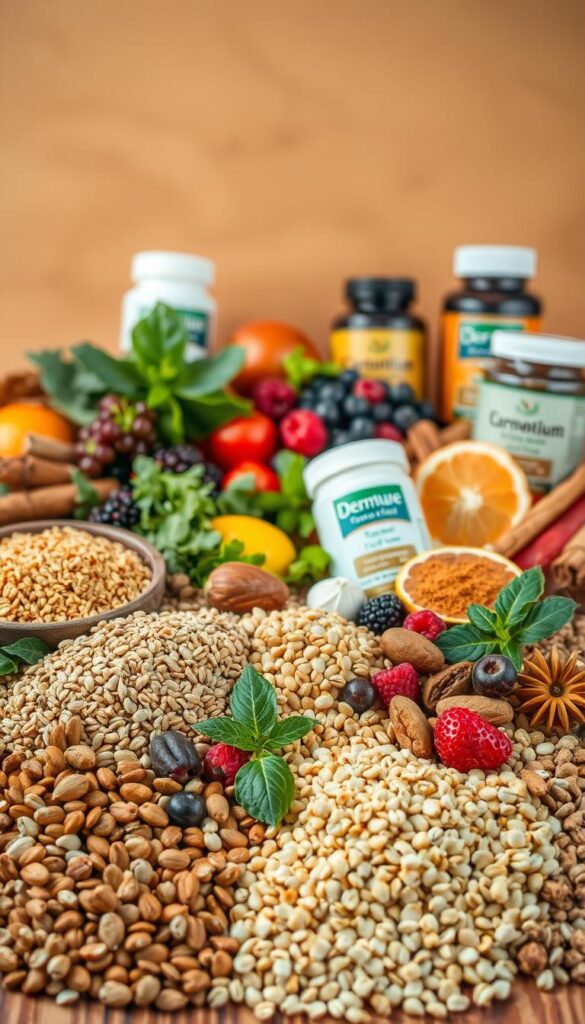
- Use the plate method: Fill half your plate with veggies, a quarter with protein, and a quarter with whole grains.
- Swap sugary drinks for water—staying hydrated lowers the risk of spikes by 21%.
- Add 10-15g of fiber per meal to slow glucose release. Oatmeal or chia seeds work well.
Hidden sugars can ruin your progress. The average American eats 17 teaspoons of sugar daily. Always check labels for added sugars in sauces or snacks. Cinnamon or fenugreek can help natural ways to stabilize blood sugar by boosting insulin sensitivity.
When you eat matters too. Eating balanced meals every 3-4 hours helps avoid dips and crashes. My favorite lunch is grilled chicken, roasted veggies, and barley. Small changes can lead to big control over blood sugar.
Superfoods That Naturally Regulate Blood Sugar

When I started looking into plant-based solutions for blood sugar management, some foods really caught my eye. Here’s how to add them to your daily meals:
- Cinnamon: Sprinkle it on oatmeal or in smoothies. It has compounds like cinnamaldehyde that help with insulin sensitivity. I use half a teaspoon every day. But, be careful not to use too much, as it can affect medicines.
- Bitter Melon: This veggie lowers how much sugar your body absorbs. I cook it with garlic and soy sauce to make it taste better.
- Berries: Blueberries, raspberries, and strawberries help keep blood sugar levels steady. A 2017 study found that eating berries every day can lower your diabetes risk by 12%.
- Fiber Power: Chia seeds, flaxseeds, and lentils have lots of soluble fiber. This fiber slows down how fast sugar is absorbed. I mix chia seeds into yogurt to make a yummy pudding.
| Type of Fiber | Role in Blood Sugar | Food Sources |
|---|---|---|
| Soluble | Forms gel, delaying sugar absorption | Oats, apples, carrots |
| Insoluble | Speeds digestion, prevents spikes | Whole wheat, nuts, beans |
Garlic is also good for blood sugar control. A 2017 review showed it boosts insulin. Try swapping white rice for quinoa or barley for more fiber. Small changes can make a big difference!
Herbal Supplements That Show Promise for Blood Sugar Management
Nature has long offered herbs for balancing blood sugar, and modern science is catching up. As I explored alternative methods for managing blood sugar levels, I discovered three standout herbs backed by emerging research.
Fenugreek: Ancient Remedy with Modern Research Backing
Fenugreek seeds are a kitchen staple and a traditional remedy. Studies suggest they slow carbohydrate digestion, helping stabilize glucose absorption. Sprinkle ground fenugreek in meals or take capsules—just start with small doses to avoid digestive discomfort.
Gymnema Sylvestre: The “Sugar Destroyer” Herb
This Indian herb earned its nickname by blocking sugar receptors in the tongue and gut. Research shows it may reduce insulin resistance. I recommend consulting a practitioner to determine the right extract strength, as dosages vary widely.
Berberine: The Research and Recommended Dosage
Berberine’s effects rival some diabetes drugs, per clinical trials. It mimics insulin’s action and improves glucose uptake. Take 500–1,500 mg daily in divided doses with meals. Always pair it with a doctor’s guidance to avoid interactions.
Always prioritize quality: choose brands third-party tested for purity. Track your progress with a glucose journal to see how these herbs work with your routine. Remember, supplements complement—not replace—medical advice. Small steps today can lead to lasting balance tomorrow.
How Physical Activity Becomes Your Ally in Blood Sugar Control
Walking the dog, climbing stairs, or dancing in the kitchen became my daily habits. These small actions helped my blood sugar levels improve over time. Exercise is more than a workout; it’s a natural way to control blood sugar. Let me tell you how it works and how to make it a part of your life.

Every time I move, my muscles use glucose, which lowers blood sugar. Activities like brisk walking increase heart rate and improve insulin sensitivity. Strength training builds muscle, which helps take up more glucose. Even yoga or stretching can help by reducing stress hormones that raise blood sugar. The most important thing is to keep doing it regularly.
- Start small: Aim for 10 minutes daily and build toward 150 weekly minutes of moderate activity.
- Walk after meals. A 15-minute stroll post-dinner can slash blood sugar spikes by up to 22%, studies show.
- Track steps with a pedometer. Aim for 3,000-5,000 extra steps daily to see gradual improvements.
- Mix it up: Alternate between walks, cycling, or even gardening to keep routines fun and effective.
“Physical activity improves glucose metabolism more than any supplement,” says the American Diabetes Association, reinforcing why it’s a cornerstone of tips for maintaining healthy blood sugar levels.
Even on busy days, I find ways to stay active. I pace while on calls or do squats during TV ads. Always check blood sugar before and after exercise, drink plenty of water, and wear good shoes. Celebrate your achievements, like reaching 10,000 steps, to keep you going.
Making movement a habit isn’t just about gyms. It’s about seeing life as a chance to improve your health. Every step you take is a step towards better blood sugar control and more energy.
Stress Management Techniques That Help Stabilize Blood Sugar
Managing stress is key to controlling blood sugar. When we feel stressed, our body’s stress hormones can raise blood sugar. Let’s look at simple ways to calm our minds and support our health.

The Science Behind Stress and Blood Sugar Fluctuations
Stress makes our body release stress hormones like cortisol. These hormones can increase blood sugar and mess with insulin. Studies show that small stress-reduction steps can help a lot.
Meditation and Mindfulness Practices I’ve Found Effective
I started with 5 minutes of guided meditation each day using apps like Headspace or Calm. This helps lower cortisol. A 2020 study in the Journal of Alternative and Complementary Medicine found mindfulness lowers blood sugar spikes from stress. Even short sessions help!
Simple Breathing Exercises You Can Do Anywhere
- Inhale deeply through your nose for 4 counts.
- Hold your breath for 4 counts.
- Exhale slowly through your mouth for 6 counts.
- Repeat 3-5 times to calm your nervous system.
Try yoga, walking in nature, or dancing to music to beat stress. Drinking water when thirsty also helps—dehydration can make blood sugar levels worse, says Dr. Wylie-Rosett. Small steps can lead to big changes in blood sugar levels.
Even 10 minutes of mindful breathing or a short walk can reset your body. What works for you might not work for others—keep trying, adapting, and celebrating your progress.
Creating a Holistic Blood Sugar Management Plan
Every body is different, so your plan should be too. Start by tracking your blood sugar levels for a week. This will show you your baseline. Note how different foods, activities, and stressors affect your readings.
This data helps you focus on the changes that matter most. It’s like a roadmap for your health.
“There isn’t a magic diet for diabetes,” says Wylie-Rosett. “Focus on how your choices align with your health goals.”

- Pair carbs with protein or healthy fats to slow glucose spikes (try oatmeal with nuts).
- Incorporate soluble fiber-rich foods like flaxseeds or carrots to regulate absorption.
- Drink water before meals to curb hunger and aid glucose balance.
Use plant-based solutions like apple cider vinegar or cinnamon. Also, try alternative methods such as mindful breathing. Aim for 150 minutes of weekly exercise—walking, yoga, or dancing—to boost insulin sensitivity.
Seven to eight hours of sleep nightly supports metabolic balance. It’s key for your body’s health.
Work with a registered dietitian to tailor your approach. Start small: swap one sugary snack for berries, then add a 10-minute walk daily. Track progress weekly. If readings don’t improve after two weeks, adjust your strategy.
Celebrate tiny wins—they build momentum. It’s all about progress, not perfection.
My routine? Morning oatmeal with chia seeds, a 30-minute walk at lunch, and deep breathing before bed. It’s not about being perfect—it’s about being consistent. Your plan evolves as your life does. Stay flexible, and involve your doctor when mixing natural methods with medications.
Conclusion: Embracing Natural Approaches for Long-Term Blood Sugar Health
Managing blood sugar is more than quick fixes. It’s about making habits that last. Herbs like cinnamon and fenugreek help, but they need diet and lifestyle changes too.
Exercise, eating mindfully, and managing stress are backed by science. People like Ros Hodgkins and Jo have seen results. They reversed diabetes and stabilized blood sugar with diet and yoga.
Every choice you make matters. Adding cinnamon to oatmeal or choosing berries over sweets can make a big difference. It’s not about being perfect, but consistent.
Even small actions, like a short walk or deep breathing, help. Mixing herbs like turmeric with fiber-rich foods keeps my blood sugar steady. I’m always learning more.
Don’t wait for a crisis to start. Begin with one change, like cinnamon or tracking your meals. Always talk to your doctor before changing your routine.
Remedies like fenugreek or meditation take time, but they’re worth it. Your body can heal with the right approach.
FAQ
What are some natural remedies to keep blood sugar in check?
Natural remedies include changing your diet and eating certain foods. Cinnamon and bitter melon are good choices. Regular exercise and managing stress are also key. Creating a health plan that fits your life is important.
How do dietary choices affect blood sugar levels?
What you eat greatly affects your blood sugar. Foods with a low glycemic index keep it stable. High-glycemic foods can cause spikes. Eating balanced meals with fiber is crucial.
When should I consider using herbal supplements for blood sugar management?
Think about herbal supplements like fenugreek or berberine for better blood sugar control. But, always talk to a healthcare provider before starting any supplements.
What types of exercise are beneficial for blood sugar control?
Aerobic and strength training improve insulin sensitivity and glucose uptake. Adding flexibility workouts helps your metabolic health too.
How does stress impact blood sugar levels?
Stress raises blood sugar levels by releasing hormones like cortisol. Chronic stress can cause insulin resistance. Managing stress is key to stable blood sugar.
Can natural remedies work alongside conventional medication?
Yes, natural remedies can boost the effect of conventional treatments. Always work with your healthcare provider to safely combine both.
Are there specific foods I should avoid to maintain healthy blood sugar levels?
Avoid processed foods, sugary snacks, and drinks that cause blood sugar spikes. Eat whole, nutrient-dense foods for better health.
How do I create a personalized blood sugar management plan?
Begin by tracking your blood sugar levels and setting goals. Choose natural methods that fit your lifestyle. Regular health check-ins help adjust your plan as needed.








